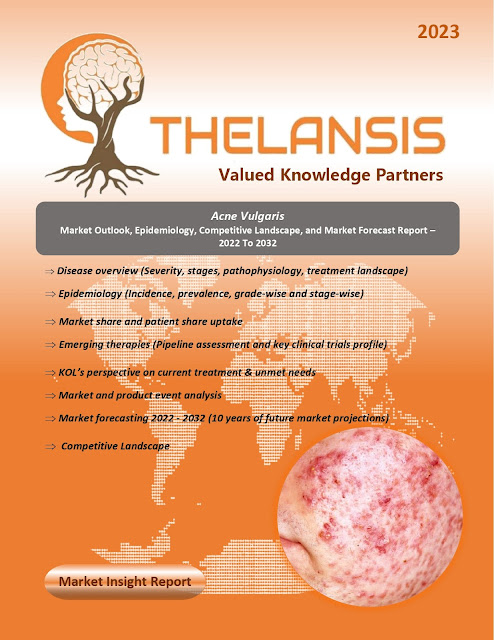Alport Syndrome – Market Outlook, Epidemiology, Competitive Landscape, and Market Forecast Report – 2023 To 2033
Alport syndrome, a genetic condition, presents with kidney disease, hearing loss, and eye abnormalities. It arises from mutations in three genes: COL4A3, COL4A4, or COL4A5, each responsible for a component of type IV collagen crucial in kidney glomeruli. In 80% of cases, it follows an X-linked pattern due to COL4A5 mutations, though other inheritance patterns exist. X-linked Alport syndrome manifests as:
1.
Juvenile form: Renal insufficiency appears
between ages 20 and 30
2.
Adult form: Renal insufficiency occurs after
30
About 50%
of males in the X-linked form require dialysis or kidney transplantation by 30,
and 90% develop ESRD before 40. Females have a 12% ESRD risk by age 40,
increasing to 30% by age 60. Proteinuria and hearing loss in females elevate
ESRD risk. Differential diagnoses include Immunoglobulin A nephropathy, Thin
GBM disease, Acute post-streptococcal glomerulonephritis, Medullary cystic
disease, Multicystic renal dysplasia, and Polycystic kidney disease. Alport
syndrome lacks specific treatment; the focus is on limiting proteinuria and
kidney disease progression. Options include angiotensin-converting enzyme
inhibitors (ACEi) and angiotensin receptor blockers (ARBs) for managing
proteinuria, hypertension, and CKD.
·
Alport syndrome affects an estimated 1 in
5,000-10,000 in the U.S., totaling 30,000-60,000 people. It accounts for 3% of
childhood chronic kidney disease and 0.2% of adult end-stage renal disease
cases in the country.
Thelansis’s
“Alport Syndrome Market Outlook, Epidemiology, Competitive Landscape, and
Market Forecast Report – 2023 To 2033" covers disease overview,
epidemiology, drug utilization, prescription share analysis, competitive
landscape, clinical practice, regulatory landscape, patient share, market
uptake, market forecast, and key market insights under the potential Alport
Syndrome treatment modalities options for eight major markets (USA, Germany,
France, Italy, Spain, UK, Japan, and China).
KOLs insights of Alport Syndrome
across 8 MM market from the centre of Excellence/ Public/ Private hospitals
participated in the study. Insights around current treatment landscape,
epidemiology, clinical characteristics, future treatment paradigm, and Unmet
needs.
Alport
Syndrome Market Forecast Patient Based Forecast Model (MS. Excel Based
Automated Dashboard), which Data Inputs with sourcing, Market Event, and
Product Event, Country specific Forecast Model, Market uptake and patient share
uptake, Attribute Analysis, Analog Analysis, Disease burden, and pricing
scenario, Summary, and Insights.
Thelansis Competitive Intelligence (CI) practice
has been established based on a deep understanding of the pharma/biotech
business environment to provide an optimized support system to all levels of
the decision-making process. It enables business leaders in forward-thinking
and proactive decision-making. Thelansis supports scientific and commercial
teams in seamless CI support by creating an AI/ ML-based technology-driven
platform that manages the data flow from primary and secondary sources.
Tags: Alport
Syndrome, Alport Syndrome market outlook, Alport
Syndrome competitive landscape, Alport
Syndrome market forecast, Thelansis, Primary market
research, KOL insights, Competitive Intelligence (CI)




Comments
Post a Comment